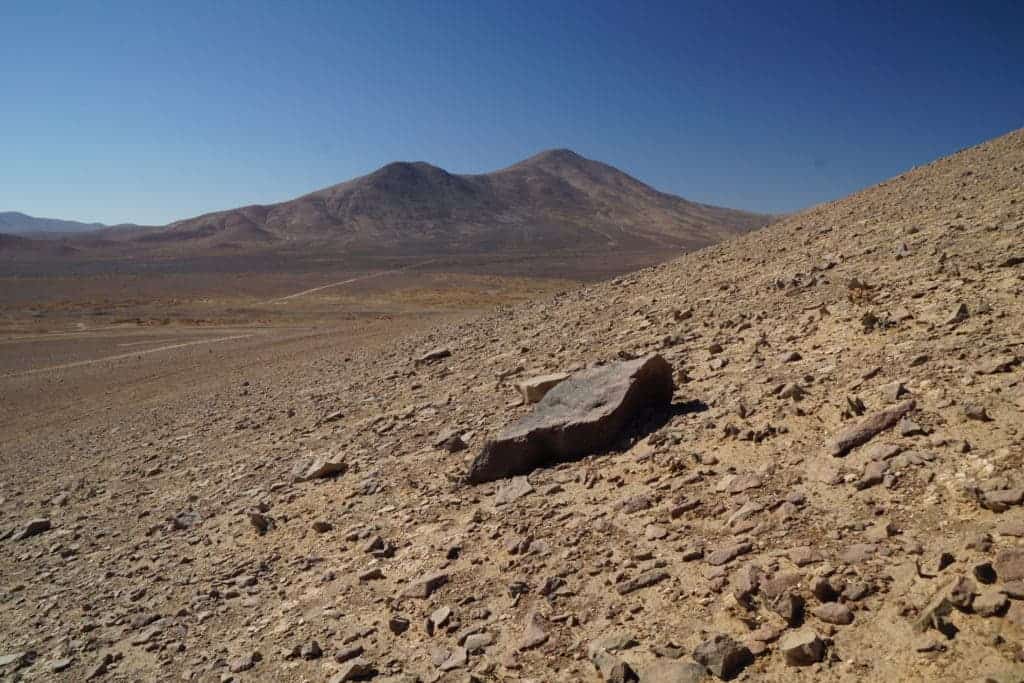For the first time, researchers have found evidence of life rebounding in the world’s driest desert: the Atacama; and if it can rebound there, it might be able to do the same thing on Mars.

In South America’s Atacama Desert, it almost never rains. It’s the driest nonpolar place in the world, with an average rainfall of 15 mm (0.6 in) per year. In some areas, decades can pass without a single rain event.
Scientists have long wondered if the microbes they’ve been seeing around the desert are actually living there or are merely vestiges blown away by the wind. In a new study, Washington State University planetary scientist Dirk Schulze-Makuch and his colleagues found evidence that even this extremely arid environment can host life. They found that when things get tough, microorganisms can turn dormant for decades, then bounce back to life.
“It has always fascinated me to go to the places where people don’t think anything could possibly survive and discover that life has somehow found a way to make it work,” Schulze-Makuch said. “Jurassic Park references aside, our research tell us that if life can persist in Earth’s driest environment there is a good chance it could be hanging in there on Mars in a similar fashion.”
The finding was made possible through a spur of luck. When Schulze-Makuc and his team went to the Atacama in 2015, something incredible happened: it rained. After this extremely rare shower, researchers took soil samples, and found they were teeming life forms where almost none could be found before.
They identified several microbial communities reproducing in the samples, including indigenous species of microbial life that had adapted to the harsh environment. After they went back in 2016 and 2017, they found that the microorganisms were slowly turning dormant again as the humidity faded away.
“In the past researchers have found dying organisms near the surface and remnants of DNA but this is really the first time that anyone has been able to identify a persistent form of life living in the soil of the Atacama Desert,” Schulze-Makuch said. “We believe these microbial communities can lay dormant for hundreds or even thousands of years in conditions very similar to what you would find on a planet like Mars and then come back to life when it rains.”
They also found three different populations of viruses that were apparently linked to the microbial blooms — though viruses were not the central focus of this study, Schulze-Makuch told ZME Science.
Of course, while this does raise interesting perspectives for extraterrestrial life, the surface of Mars is much tougher than Atacama. Sure, Atacama is a hellish environment in its own right, but Mars is also lacking an atmosphere and is much more exposed to cosmic rays. It’s also much colder than Atacama, though it wasn’t always like this.
Modern research suggests that Mars (or at least some areas of it) were once lush environments, filled with small oceans and lakes where early lifeforms may have thrived. As the planet gradually became drier and cooler, these microorganisms may have developed evolved special adaptations to the changing environment, much like the Atacama creatures. But Mars also has an advantage — unlike the Atacama, it has pockets of frozen water beneath its surface.
“We know there is water frozen in the Martian soil and recent research strongly suggests nightly snowfalls and other increased moisture events near the surface,” he said. “If life ever evolved on Mars, our research suggests it could have found a subsurface niche beneath today’s severely hyper-arid surface.”
Of course, Earth’s substitutes for Martian environments can only go so far in replicating the conditions of the Red Planet, but the Atacama holds some promising signs. It’s unclear for how long these microorganisms can last, Schulze-Makuch told ZME Science. “They can at least survive a decade or so without rain, but probably much much longer,” he explained in an email.
Now, Schulze-Makuch says he and his team would like to look for lifeforms in the Don Juan Pond in Antarctica, a shallow lake, so salty it remains liquid even at temperatures way below freezing.
Unfortunately, it currently wouldn’t be possible to deploy all the technology on a Mars rover, but parts of it could certainly be included in future missions, Schulze-Makuch concludes.
The study has been published in the Proceedings of the National Academy of Sciences. http://dx.doi.org/10.1073/pnas.1714341115


